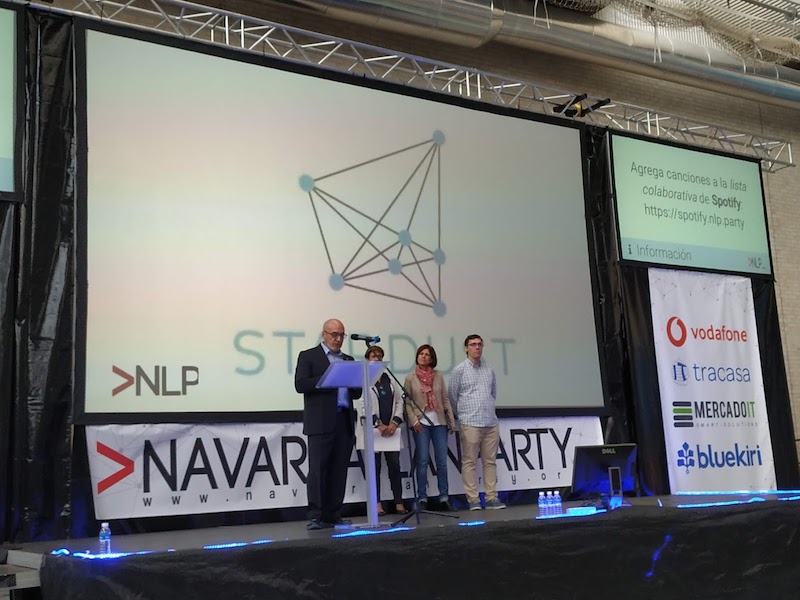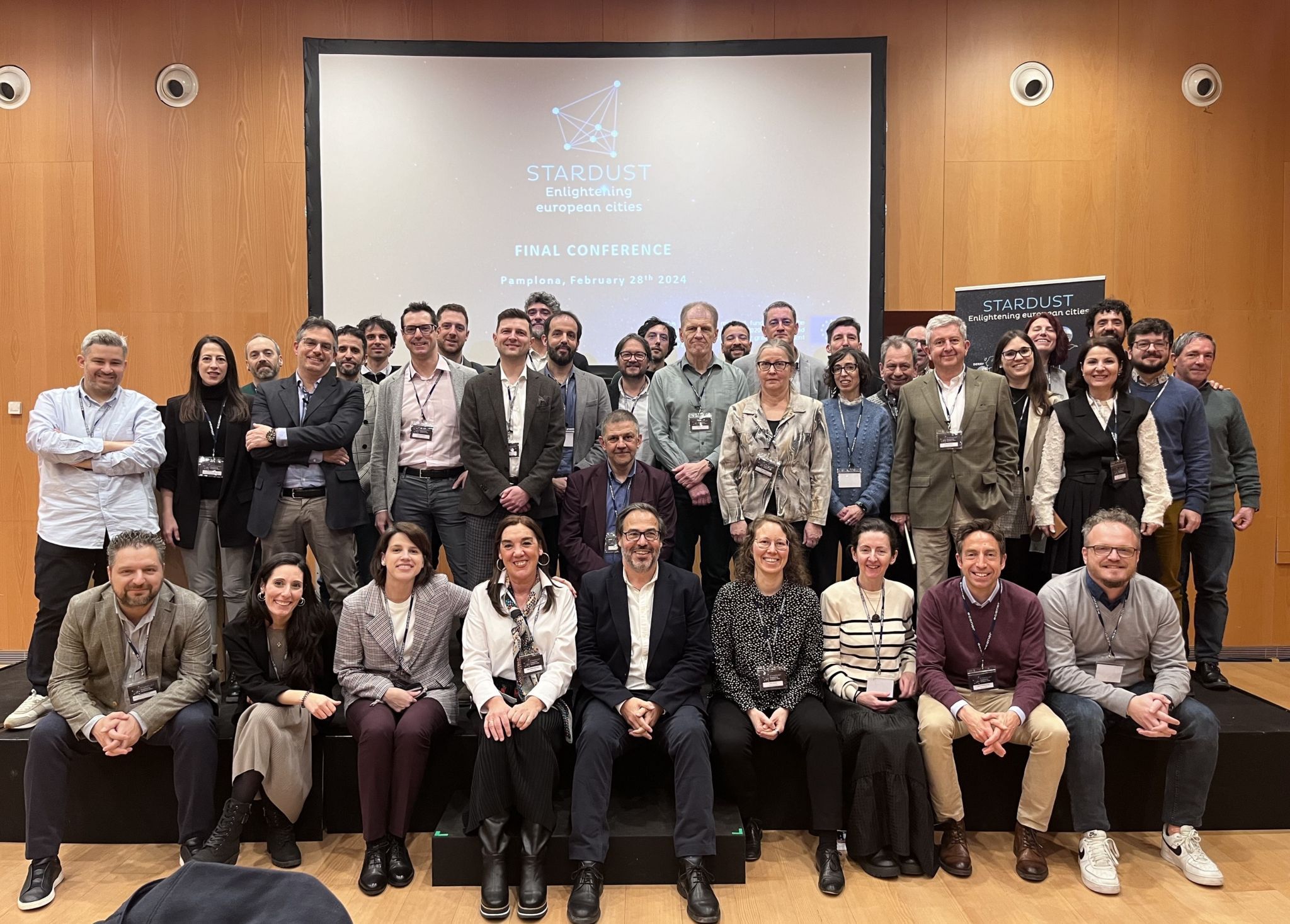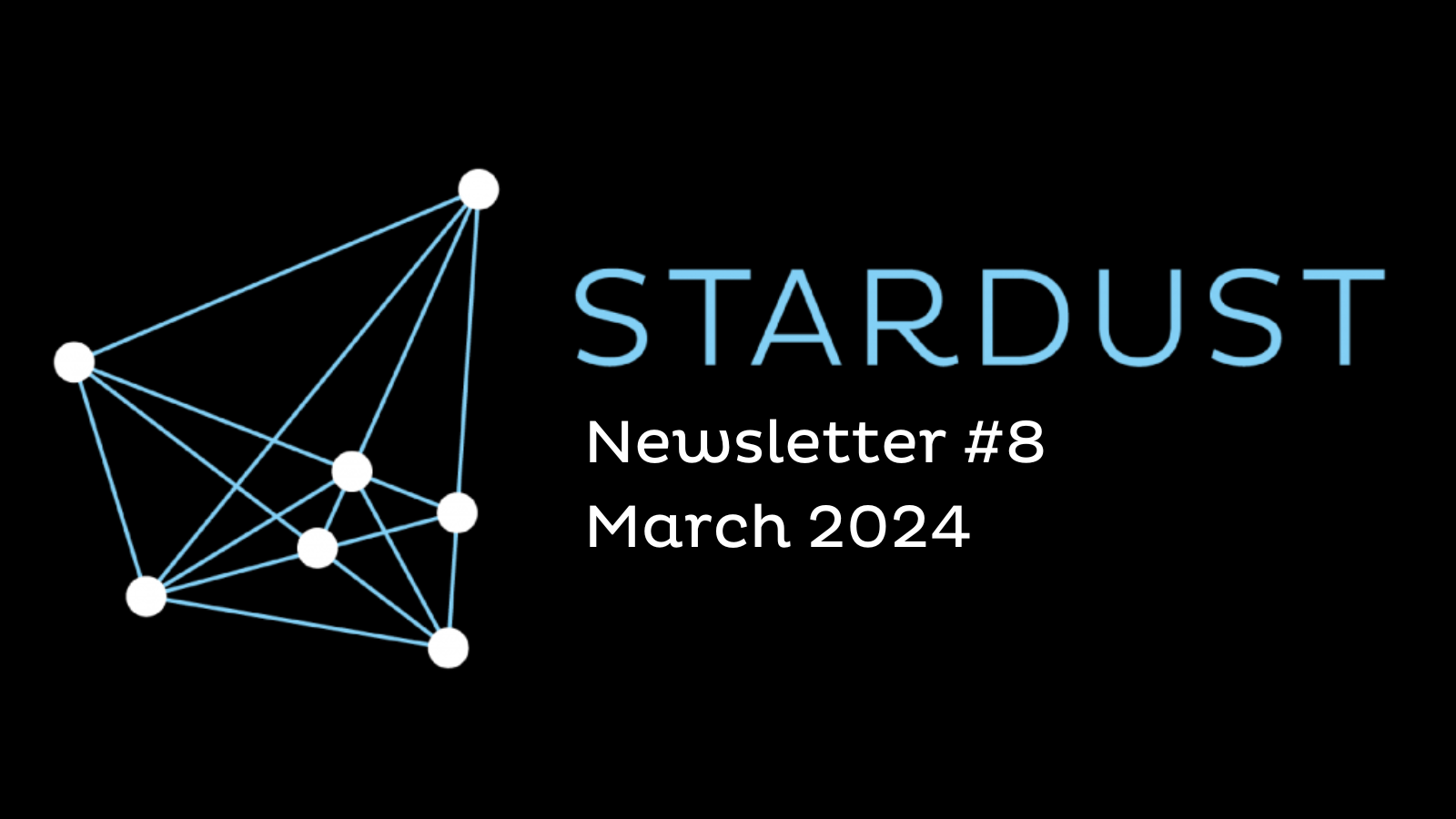On September 5-8, the Public University of Navarra (UPNA, Spain) hosted the second edition of the Navarra LAN Party. 450 persons gathered for this open event, which included an activity pitting participants to propose new use cases for the Pamplona City App being developed within the EU-funded project STARDUST by the Institute of Smart Cities (ISC) of UPNA.

This App provides integrated and georeferenced information of city infrastructures such as parking lots, e-charging devices for e-vehicles and public transportation (taxi and bus). It aims at offering detailed alternative routes for citizens’ mobility, public bike booking, and mobility management related to leisure and cultural events. The new use cases suggested by the participants should be based on the different sources of data and information published by Pamplona City Council and other institutions.
After evaluating the different proposals, the jury, composed by representatives of Pamplona Municipality, ISC and CENER as coordinator of STARDUST, decided that the winner was Mr Pablo Medrano. The winning proposal presented three use cases of interest, among which the creation of a data layer showing a “solar lighting hazard factor” related to zebra crossings stood out. The solution proposes to use cost-effective models, based on the position of the sun each day of the year, the time of the day and the geographical context, to identify zebra crossings where a high risk of being run over due to dazzling exist. The jury considered that this information could be useful both for drivers -who could avoid certain routes with poor visibility- and for other road users -who could take extreme precautions- avoiding situations of real risk and serious accidents.
Detecting pedestrian traffic in non-pedestrian places, such as high pedestrians crossing out of zebra crossing in a specific street, was also seen as another interesting use case. This would help decision makers to improve pedestrian mobility.
The main pillar of the LAN Party is coexistence and collaboration among all attendees through the exchange of experiences and teaching. This coexistence is supported by the Open Source culture, where the diffusion and exchange of knowledge makes the community grow. The support and promotion of these values will promote innovation and creativity in the field of ICT in the region of Navarra.


